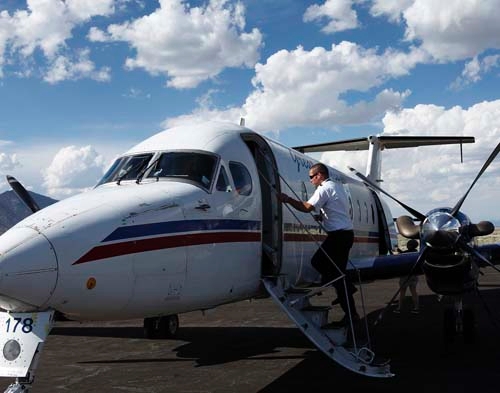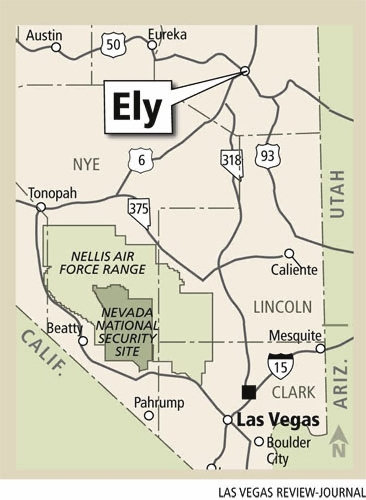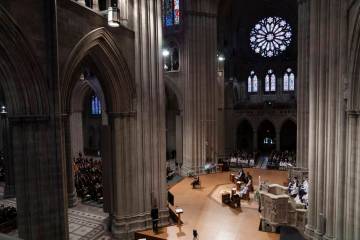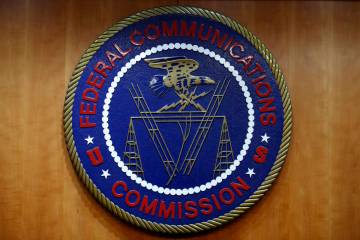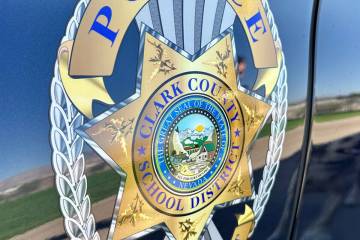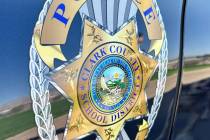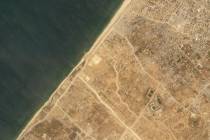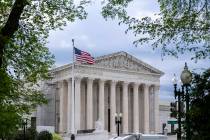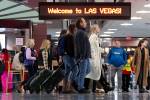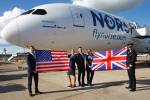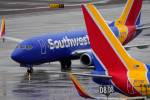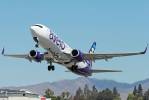Federal airline subsidy crucial for Ely
ABOARD FLIGHT 7319 -- The first officer for Great Lakes Airlines delivered quick safety instructions, raising his voice above the twin-engine turboprop's throttling roar before take-off. He reminded four passengers flying from Ely to Las Vegas in the 19-seat craft that it had no amenities.
No packets of peanuts or pretzels. No plastic cups of ice and soda losing its fizz. No napkins.
"There's no bathroom on board. There's really nothing on board for you," joked Paul Ruhe after he demonstrated what to do in case the Beechcraft 1900D crashed in the high Nevada desert, requiring an emergency exit.
"Throw open the doors and watch the paint," he said.
The no-frills flight to and from Ely every afternoon saves more than 200 desolate miles and several hours of driving time for fliers on board. But American taxpayers have been footing most of the bill, up to $3,700 to subsidize each passenger who straps into a seat for the 75-minute trip.
The Nevada route that starts in Las Vegas, turns around in Ely and returns to Sin City is among 13 flights around America that have been supported by the Essential Air Service and are now on the chopping block. It's part of a GOP-led effort to trim the U.S. budget by cutting the most expensive and shortest routes among more than 150 supported by EAS at a cost of $200 million a year.
Members of Nevada's congressional delegation and the Ely Airport manager are working to save the only commercial air service out of the isolated city of 4,255 people. Once a stagecoach stop on the Pony Express trail, Ely lives on in a land of cattle ranches, mines, wild horses and big game. It sits on U.S. 50, the loneliest highway in America, at the central eastern edge of Nevada near the Utah border.
"If there's anything to the concept of Essential Air Service, it's embodied in Ely," Airport Manager Michael Coster said on a recent sleepy Sunday afternoon from his small office. "It's 237 miles to Salt Lake City, 243 miles to Vegas. There's no bus service, no train, no one-way rental car."
In making his case to continue the most isolated U.S. airport's lone commercial flight, Coster produced figures showing passenger counts had more than doubled and per person costs had dropped since mid-May. That's when Great Lakes Airlines started flying the more popular Ely-Las Vegas route instead of to Denver, Colo., with a stop in Moab, Utah, where passengers rarely got on the plane.
For example, in June, 52 passengers flew from Ely to Las Vegas compared with 24 in June of 2010 for a 117 percent increase, he said. In July, 64 passengers jumped aboard the Ely-Vegas flight compared with 30 in July of last year for a 113 percent increase.
August traffic has been up, too, with most one-way trips carrying three to five passengers, according to Coster. Last year, the plane sometimes went empty as Great Lakes Airlines fulfilled its contract by flying every day, passengers or not. The most on any flight has been eight passengers.
Coster estimated the current passenger subsidy at $2,400, counting only the outgoing passengers from Ely per current government practice. He argued that if incoming passengers from Las Vegas also were counted, the per passenger cost would drop to about $1,170.
"It can be and should be done for less," Coster said of the flights. "There are things we can do to lower costs. I do feel the community will suffer if it has no commercial service."
BUSINESS PASSENGERS
Tony Wright, who has lived in Ely since 1968, has been flying into and out of the small airport each month since March to travel to his job in the Dominican Republic. He works for Barrick Gold Corp. as a safety expert. He spends two-thirds of each month working overseas and the rest at home on break.
When he first started taking the flights through Denver, he usually was the only one on board. On Aug. 14, he was among four passengers, all traveling for business, including a reporter. He said he and his wife are thinking of moving to St. George, Utah, if the Ely commercial flights stop.
"I'm looking at relocating because my work depends on having a commercial flight out," Wright said. "I think the service is a good thing for the people here and for business."
Wright, casual in shorts, sandals and a baseball cap, was sitting near Alex Larsen of Page, Ariz. Larsen also works in the mining industry, digging water wells in different parts of rural Nevada. He had finished a job for Newmont Mining near Ely and was heading home for a 10-day break before returning for a job around Winnemucca. He said it was his first time on the Ely-Vegas flight.
"I found it on the Internet," Larsen said, adding he hadn't known about it before. "It's a convenience for me. I'm always traveling around rural Nevada, and it can be tough sometimes."
Larsen, too, was relaxed in shorts and flip-flops, which he had to slip off when he went through the tiny airport's TSA-approved metal detector, just like at international airports.
"Anything on the feet is shoes," the TSA officer told him when he balked at removing them.
On board the plane, things were far more laid back.
Each passenger got a window and aisle seat, since there is only one row on each side of the plane. One sat up front, three near the back, enjoying the view of the desert landscape below, broken by red-tinged sandstone mountains, dry washes and green circles of alfalfa watered by automatic pivots.
As clusters of homes appeared, Wright called out the names of towns and points of interest.
Pioche, the upper and lower Pahranagat Lake, Coyote Springs, Caliente, Moapa, Lake Mead, the mysterious Area 51 and Nellis Air Force Base as the plane entered the Las Vegas Valley.
About 20 minutes before landing at McCarran International Airport, the pilot warned of turbulence, and the turboprop began to bounce around in the air, bumping and sliding, hiccuping along.
"It's the McCarran wind sheer," Wright said. "This is usually where it gets fun. It can get a little rough. If the plane ever crashes, I just hope it lands hard because I don't want to limp away."
Flight 7319 arrived in Las Vegas with no trouble. Several members of the Great Lakes Airlines ground crew met passengers on the tarmac -- where bags and baggage suddenly appeared for pickup -- and escorted them through a locked security door into the airport terminal.
"You again," one of the ground crew shouted to the first disembarking flier, a regular customer.
$1.8 MILLION, TWO-YEAR CONTRACT
Passengers pay $69 to $149 to the airline for a one-way ticket, depending on how far in advance it is purchased. Those on board often work for mining and power companies, ranches and renewable energy projects, or medical services for the hospital or maximum-security prison in Ely, said Coster, the airport manager. The White Pine County-owned airport doesn't share in any profits since the $1.8 million, two-year contract is between Great Lakes Airlines and the Department of Transportation.
In fact, if the commercial airline service stopped, the airport would continue to operate as it has since just before World War II, when the rules included this little gem for cowboy plane jockeys: "Pilots will not wear spurs while flying," according to a story on its history in the Ely Times.
"Losing the service would not close the airport. It would be a loss for the community," Coster said.
The two-runway airport was used during the war to train pilots through the federal Civilian Pilot Training Program, but its fliers often went on to military training and careers, according to the history.
Now, 22 planes are based at Yelland Field, including private and business planes. Other primary users include American Medflight, the Reno-based air ambulance service that transports people in Nevada, Utah and California; U.S. Forest Service smoke jumper planes; and Bureau of Land Management helicopters to fight fires. There is no control tower. A private jet center sells fuel.
Coster said he is hoping for a government exemption to allow smaller, single-engine planes to continue the subsidized Essential Air Service. That would cut costs, since those aircraft are cheaper to operate, carrying from six to nine passengers, the perfect size for the Ely-Vegas route for now, he said.
Under current federal rules, larger twin-engine planes must be used, although Alaska and Hawaii get exemptions. Great Lakes Airlines flies only 19-passenger planes, so it could lose the contract.
"The safety of single-engine planes has improved since they first put the rules in place more than 25 years ago," Coster said. "The whole program needs to be updated and scrubbed to cut costs."
HIGH-POWERED HELP
Coster is getting some high-powered help from every member of Nevada's congressional delegation. U.S. Sen. Harry Reid and U.S. Rep. Shelley Berkley, both Democrats, and U.S. Sen. Dean Heller and U.S. Rep. Joe Heck, both Republicans, are all trying to find ways to preserve the Ely flights.
"Truly this air service is a lifeline for the few thousand that call Ely home and the surrounding areas, so I think this air service is essential," Berkley said in an interview.
Heller said there is a clear difference between the Ely to Denver route that wasn't thriving and the Ely to Las Vegas flight that may be more successful.
"My goal is to help the airport," he said.
Heck, too, is exploring options, including charter flights or using smaller planes, his staff said.
Reid "is working very closely with the secretary of transportation to find a right balance for Ely," said his spokesman, Zac Petkanas.
Reid has been told the Department of Transportation plans to dispatch analysts to Ely and other small communities "and will work with them" to find a solution.
Earlier this month, the Senate majority leader said he could not justify a flight subsidy of $3,500 per passenger, but Petkanas said Reid now understands that number was outdated.
The rural airline issue suddenly popped up in August when Congress enacted a law to cut off air subsidies to 13 communities that are either within 90 miles of a hub airport or, in the case of Ely, where the federal payment amounts to more than $1,000 per passenger.
But the law also granted Transportation Secretary Ray LaHood authority to issue waivers for the subsidies to continue if he determines there are things that cause travelers in those towns within 90 miles of a hub airport "undue difficulty" in getting to the nearest major airport.
Less clear are the secretary's powers to grant waivers to Ely and to Alamogordo, N.M., and Glendive, Mont., the other two airports with the highest per passenger subsidies. The law is silent on waivers for those communities, although the secretary has not ruled out ways to assist them.
The cuts approved by Congress this month aimed to save $16.5 million from the $200 million program. Other legislation pending in Congress would phase out the subsidies entirely by 2014.
The Great Lakes Airlines contract is scheduled to expire on Sept. 30, 2012. Coster said he has been told by federal officials it's possible the subsidy could wind down over a 30-to-90 day period without a waiver or some other arrangement.
Airport officials say the federal air program has been largely unchanged since it started in 1978 after airline deregulation to protect rural communities from losing service. Republicans who want to cut the program argue it was meant to be temporary, but instead has more than doubled in size.
Coster said he is all for scaling back the Essential Air Service, but not eliminating it.
"We definitely want to be responsible users of this program. Just negligently sitting back and looking like you are a fat cow is not going to keep this program alive."
Stephens Washington Bureau Chief Steve Tetreault contributed to this report. Contact Laura Myers at lmyers@reviewjournal.com or 702-387-2919. Follow @lmyerslvrj on Twitter.



